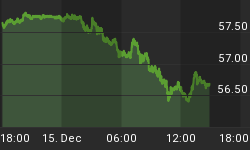The Federal Reserve lowered rates by 50 basis points on Wednesday topping off a 75 basis point intra-meeting cut last week. This 125 basis point cut in just eight days was the most aggressive action taken by the Fed in 24 years, and that was when rates moved down from 11.75% to 10%. Similar to eight days ago, the Fed still sees downside risks to economic growth, but the Fed said that this rate cut "combined with those taken earlier, should help to promote moderate growth over time and to mitigate the risks to economic activity." This has tempered expectations for the March meeting. On Tuesday, there was a 96% probability that the Fed would lower rates to 2.75% at the March 18 meeting. Now, there is an 84% probability that rates will remain at 3.0%. The most likely path now is three or four consecutive cuts following the March meeting. This results in the Fed cutting rates to 2.25% at the August meeting, then a roughly 50% chance of one more in September to end the easing cycle at 2.0%.
Now the focus is on Friday's employment report. As a prelude to the Labor Departments' report, the ADP employment report was released on Wednesday. It showed a gain of 130,000 workers, which was over three times larger than economists were expecting. While the monthly numbers can differ significantly, the overall trend between the ADP report and the employment report are similar. We expect the job market to weaken materially in 2008, but it might take longer to materialize. Employment growth was not nearly as strong as the previous cycle. Since the recovery started in last 2002, there have been roughly nine million jobs added. Going into the previous employment peak the economy added closer to 11.5 million jobs in the previous four-and-a-half years and over 24 million jobs during the eight year recovery. Additionally, while the great decoupling of the global markets may turn out to be more of a myth, at this point the global economy has held up as the US economy stalled. This along with the dramatic Fed action could provide corporate America with enough optimism to delay decisions to layoff workers.
The release of the fourth quarter GDP report confirmed the suspicions that the economy has slowed dramatically. The Commerce Departments' first guess on fourth quarter GDP (there will be two revisions) showed that the economy increased only 0.6% on an annualized basis and 2.5% over the full year. Not only was this weaker than third quarter activity, but was half the growth economists expected. Personal consumption was also weaker than estimates, rising just 2.0%. The largest drag on the economy was residential construction, which was down 23.9% on an annualized basis and off 18.1% compared to the fourth quarter of 2007. Those bullish on the economy will point to the $3.4 billion dollar inventory drawdown as providing some stimulus for the first quarter.
Fourth-quarter earnings have come in much worse then economists were expecting. Just over half of the S&P 500 has reported fourth quarter results. Earnings are almost 20% lower than last year. Almost all the weakness has been in the financial and consumer discretionary sectors. Earnings for those two sectors are down 123.7% and 30.6%, respectively. Excluding those two sectors, earnings are running about 11% higher than last year. Of the 234 companies that have reported, 65.9% of the companies that have reported have exceeded estimate, 23.4% have missed.
The themes that played out during going into the fourth quarter continued to impact corporate results, namely commodity prices, weak dollar and stronger international markets. A slowing US consumer was a new development that will likely continue into 2008. McDonald's provided evidence that the slowdown in consumer spending has hit more stable business. During the conference call McDonald's said that December same store sales were unchanged and the fast food restaurant chain expects January sales to increase only 1.5%.
The weak housing market has spread to suppliers. Black & Decker reported that earnings per share dropped to $1.06 from $1.38 last year. The company also said that first quarter earnings would be $1.10 to $1.20 per share, significantly less than the $1.46 analysts forecasted. During the conference call, CEO Nolan Archibald said that, "we recognize the U.S. economy is slowing, and we do not expect a housing recovery in 2008."
There has been a lot of discussion regarding food inflation. It is starting to impact the large food companies as well. Kraft reported results that included a 410 basis point drop in gross margin. Kraft said that nine of its eleven largest commodity inputs costs started 2008 at record high price levels. Kellogg said that it expects commodity inflation to be a $0.65 per share headwind for 2008, up from $0.40 per share forecasted in October. The company either has already or will institute price increases across the board. Most prices in Kellogg's portfolio will increase by low to mid-single digit percentage.
Over the past month, analysts have lowered estimates for first quarter earnings growth from 4.7% to 1.2%. Interestingly, earnings growth estimates for the full year have increased from 15.1% to 15.5%. This is because fourth quarter earnings have been so weak resulting in lower earnings for 2007 rather than an actual increase in 2008 earnings estimates. Even still, estimates for the full year are likely going to come down. Investors are hoping that monetary and fiscal stimulus will accelerate the economy during the second half of the year. We are skeptical that monetary policy will be as effective as investors are anticipating and the economy will enter a consumer led recession.
















